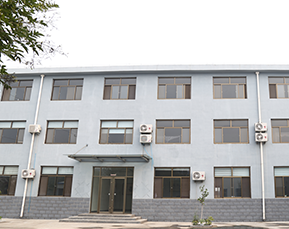 Afrikaans
Afrikaans  Albanian
Albanian  Amharic
Amharic  Arabic
Arabic  Armenian
Armenian  Azerbaijani
Azerbaijani  Basque
Basque  Belarusian
Belarusian  Bengali
Bengali  Bosnian
Bosnian  Bulgarian
Bulgarian  Catalan
Catalan  Cebuano
Cebuano  Corsican
Corsican  Croatian
Croatian  Czech
Czech  Danish
Danish  Dutch
Dutch  English
English  Esperanto
Esperanto  Estonian
Estonian  Finnish
Finnish  French
French  Frisian
Frisian  Galician
Galician  Georgian
Georgian  German
German  Greek
Greek  Gujarati
Gujarati  Haitian Creole
Haitian Creole  hausa
hausa  hawaiian
hawaiian  Hebrew
Hebrew  Hindi
Hindi  Miao
Miao  Hungarian
Hungarian  Icelandic
Icelandic  igbo
igbo  Indonesian
Indonesian  irish
irish  Italian
Italian  Japanese
Japanese  Javanese
Javanese  Kannada
Kannada  kazakh
kazakh  Khmer
Khmer  Rwandese
Rwandese  Korean
Korean  Kurdish
Kurdish  Kyrgyz
Kyrgyz  Lao
Lao  Latin
Latin  Latvian
Latvian  Lithuanian
Lithuanian  Luxembourgish
Luxembourgish  Macedonian
Macedonian  Malgashi
Malgashi  Malay
Malay  Malayalam
Malayalam  Maltese
Maltese  Maori
Maori  Marathi
Marathi  Mongolian
Mongolian  Myanmar
Myanmar  Nepali
Nepali  Norwegian
Norwegian  Norwegian
Norwegian  Occitan
Occitan  Pashto
Pashto  Persian
Persian  Polish
Polish  Portuguese
Portuguese  Punjabi
Punjabi  Romanian
Romanian  Russian
Russian  Samoan
Samoan  Scottish Gaelic
Scottish Gaelic  Serbian
Serbian  Sesotho
Sesotho  Shona
Shona  Sindhi
Sindhi  Sinhala
Sinhala  Slovak
Slovak  Slovenian
Slovenian  Somali
Somali  Spanish
Spanish  Sundanese
Sundanese  Swahili
Swahili  Swedish
Swedish  Tagalog
Tagalog  Tajik
Tajik  Tamil
Tamil  Tatar
Tatar  Telugu
Telugu  Thai
Thai  Turkish
Turkish  Turkmen
Turkmen  Ukrainian
Ukrainian  Urdu
Urdu  Uighur
Uighur  Uzbek
Uzbek  Vietnamese
Vietnamese  Welsh
Welsh  Bantu
Bantu  Yiddish
Yiddish  Yoruba
Yoruba  Zulu
Zulu conveyor roller assembly
Understanding Conveyor Roller Assembly A Fundamental Component in Material Handling
In the realm of material handling and logistics, the conveyor system is an indispensable component that enhances efficiency and productivity. At the core of these systems lies the conveyor roller assembly, a critical element that ensures smooth and effective movement of goods. This article delves into the intricacies of conveyor roller assemblies, exploring their types, functions, applications, and the importance of proper maintenance.
What is a Conveyor Roller Assembly?
A conveyor roller assembly consists of several rolling elements that facilitate the movement of materials along a conveyor belt or a similar system. Typically, these rollers are mounted on axles, allowing them to rotate freely as materials pass over them. The assembly can vary in size, material, and design based on the specific requirements of the application, making them versatile components suitable for a wide range of industries.
Types of Conveyor Roller Assemblies
1. Gravity Roller Assemblies These rollers rely on gravity to move products along the conveyor. They are ideal for light to medium-weight loads and are often used in packaging and shipping areas.
2. Powered Roller Assemblies Unlike gravity rollers, powered rollers use motors to drive the rollers. These assemblies are better suited for heavier loads and can provide controlled movement, making them ideal for distribution centers.
3. Ball Bearing Rollers These rollers utilize ball bearings for reduced friction and increased efficiency. They are often used in applications that require high-speed movement and minimal resistance.
4. Specialty Rollers Some applications require custom solutions, leading to the development of specialty rollers. These may include rollers designed to handle specific materials, weather conditions, or load characteristics.
Functions of Conveyor Roller Assemblies
The primary function of conveyor roller assemblies is to support the conveyor belt and facilitate the movement of goods. However, they serve multiple additional functions as follows
- Load Distribution Rollers help distribute the weight of the load evenly, reducing wear and tear on the conveyor system and enhancing its longevity.
- Speed Control In powered systems, rollers can be designed to control the speed of goods moving through the process, ensuring that items are handled at an appropriate pace.
- Stability Quality conveyor roller assemblies provide a stable platform for goods, minimizing the chances of products shifting or falling during transport.
conveyor roller assembly

- Alignment Certain roller designs aid in aligning products for further processing, such as sorting, packing, or shipping.
Applications of Conveyor Roller Assemblies
Conveyor roller assemblies are utilized across various industries, including
- Manufacturing In production lines, these assemblies streamline the manufacturing process by ensuring efficient movement of components and finished products.
- Warehousing and Distribution Roller assemblies play a crucial role in moving goods in and out of storage areas, improving order fulfillment processes.
- Food Industry Specific roller designs are used to handle food products, ensuring hygiene and safety standards are met during transport.
- Logistics The global logistics sector relies heavily on conveyor systems with roller assemblies to manage the flow of goods through complex supply chains.
Importance of Proper Maintenance
To ensure the longevity and optimal performance of conveyor roller assemblies, regular maintenance is essential. This includes
- Lubrication Keeping rollers lubricated reduces friction and wear, extending their lifespan and enhancing overall efficiency.
- Inspection Regular inspections can identify wear and tear, allowing for timely replacements before issues lead to system failures.
- Alignment Checks Ensuring that rollers are properly aligned minimizes the risk of operational disruptions and product damage.
Conclusion
In conclusion, conveyor roller assemblies are fundamental components of modern material handling systems. Their design and functionality significantly impact the efficiency and effectiveness of various industrial processes. As industries continue to evolve, the demand for robust, reliable, and efficient conveyor roller assemblies will only increase, emphasizing the need for ongoing innovation and maintenance in this critical area of logistics and operations. Understanding the various types and functions of these assemblies helps stakeholders make informed decisions about their material handling systems, ultimately driving productivity and reducing operational costs.
-
Revolutionizing Conveyor Reliability with Advanced Rubber Lagging PulleysNewsJul.22,2025
-
Powering Precision and Durability with Expert Manufacturers of Conveyor ComponentsNewsJul.22,2025
-
Optimizing Conveyor Systems with Advanced Conveyor AccessoriesNewsJul.22,2025
-
Maximize Conveyor Efficiency with Quality Conveyor Idler PulleysNewsJul.22,2025
-
Future-Proof Your Conveyor System with High-Performance Polyurethane RollerNewsJul.22,2025
-
Driving Efficiency Forward with Quality Idlers and RollersNewsJul.22,2025





























